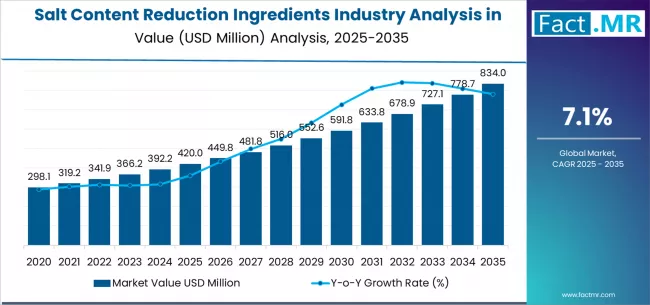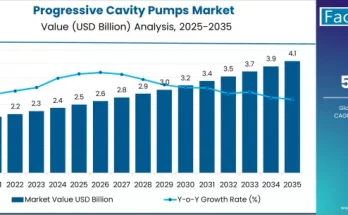The salt content reduction ingredients industry in the USA is experiencing significant growth as health-conscious consumers and regulatory authorities increasingly emphasize sodium reduction. These ingredients are crucial in helping food manufacturers develop products that comply with dietary guidelines while maintaining taste and functionality. With processed foods and snacks being major sources of dietary sodium, the adoption of effective salt substitutes and flavor modulators has become essential for both public health initiatives and food industry innovation.
Market Overview
Salt content reduction ingredients encompass potassium chloride, yeast extracts, flavor modulators, and other specialty formulations designed to replace or reduce sodium in food products. Potassium chloride leads the market due to its effectiveness as a direct sodium replacer, cost-efficiency, and regulatory acceptance. These ingredients are widely incorporated in processed foods, snacks, bakery products, soups, sauces, and other prepared meals. The primary aim is to lower sodium content without compromising taste, texture, or consumer acceptability.
The market benefits from continuous improvements in flavor modulation technologies and formulation strategies that allow manufacturers to maintain product performance while meeting stricter sodium guidelines. Food processors leverage these solutions to optimize recipes, maintain consumer satisfaction, and adhere to federal and state-level nutritional regulations.
Regional Insights
The USA exhibits a diverse market landscape, with key growth regions including the Midwest, West Coast, Northeast, and South. The Midwest holds a leading position due to the concentration of major food processing facilities and a high volume of processed food production. The West Coast and Northeast are driving innovation in clean-label products and premium food offerings, responding to consumer demand for healthier and sustainable food options. Across all regions, the industry is supported by strong public health initiatives, cardiovascular health awareness programs, and regulatory compliance efforts aimed at reducing dietary sodium intake.
Key Trends & Drivers
Several trends are shaping the salt content reduction ingredients market in the USA:
- Regulatory Compliance:Food manufacturers are adopting salt substitutes to meet FDA sodium reduction guidelines and state-level health initiatives.
- Consumer Health Awareness:Increasing focus on cardiovascular health and wellness drives demand for low-sodium products.
- Processed Food Dominance:Processed foods remain a primary application due to high-volume production and the need for versatile formulation systems.
- Flavor Modulation Innovations:Advanced technologies are enabling taste enhancement and sodium reduction without compromising product quality.
- Clean-Label Movement:Growing consumer preference for natural and minimally processed ingredients fuels demand for clean-label salt reduction solutions.
Market Dynamics
The market is driven by the need to balance taste, health benefits, and manufacturing feasibility. Potassium chloride dominates the ingredient segment due to its efficacy and widespread adoption in large-scale food production. Processed foods account for the largest application segment, benefiting from both volume demand and flexibility in recipe formulation. Challenges include managing taste deviations associated with sodium reduction, cost considerations for high-quality substitutes, and maintaining ingredient stability across diverse food matrices.
Manufacturers and ingredient suppliers are investing in sensory validation, supply chain optimization, and formulation technologies to overcome these challenges. This ensures that reduced-sodium products meet consumer expectations while complying with regulatory standards.
Opportunities and Innovations
Opportunities exist in the development of next-generation salt reduction ingredients, including enhanced potassium chloride blends, yeast extracts, and natural flavor enhancers. The integration of flavor modulation technologies with clean-label initiatives enables food companies to produce healthier products without compromising on taste or quality. Additionally, premium and functional food segments present opportunities for differentiated products that cater to specific health-conscious consumer groups. Continuous innovation in ingredient formulation, processing, and application systems is critical for sustained growth in the market.
Competitive Landscape
Key players in the USA salt content reduction ingredients industry include Cargill, K+S, Tate & Lyle, Givaudan, Kerry, and DSM Firmenich. These companies focus on product innovation, research and development, regulatory compliance, and customer support. Strategic investments in formulation technologies, clean-label solutions, and flavor enhancement systems strengthen their market position and allow them to meet the evolving demands of food manufacturers and health-conscious consumers.
Applications & End-Use Outlook
Processed foods are the largest application segment due to their widespread consumption and significant contribution to dietary sodium intake. Snacks, bakery products, soups, sauces, and other prepared meals are also prominent application areas. The growing emphasis on clean-label products and natural ingredients drives adoption across premium food segments. Food manufacturers increasingly integrate salt content reduction ingredients into mainstream and specialty product lines, ensuring compliance with health regulations while satisfying consumer taste preferences.
Conclusion
The salt content reduction ingredients industry in the USA is poised for continued growth, driven by rising consumer health awareness, regulatory pressures, and innovation in formulation technologies. Potassium chloride and other flavor modulators dominate the market due to their effectiveness, cost-efficiency, and versatility in processed food applications. Key growth regions, including the Midwest, West Coast, and Northeast, continue to drive industry expansion. Manufacturers investing in advanced technologies, clean-label solutions, and flavor enhancement systems are well-positioned to capitalize on the growing demand for healthier, lower-sodium food products across the USA.
Browse Full Report – https://www.factmr.com/report/united-states-salt-content-reduction-ingredients-industry-analysis



